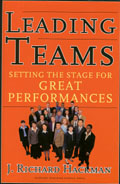
J. Richard Hackman:
Leading Teams: setting the stage for great performances,
Havard business school Press, 2002, ISBN 1-57851-333-2, (312 pages, 160*240 mm)
It is a rare occasion that you find a book that fully agrees with your experience and also takes you beyond your present knowledge. This is such a book. The title "Leading Teams" is a pun acctually, since this book is not about how to lead teams, but about how to create leading teams. I think an excerpt from the book best describes its topic.
"The leader's main task is to get a team established on a good trajectory and then to make small adjustments along the way to help members succeed, not to try to continuously manage team behavior in real time. No leader can make a team perform well. But all leaders can create conditions that increase the likelihood that it will."
"Anyone who succeeds in getting performance-enhancing conditions in place or helps strengthen them is exercising team leadership. That can be a person who is designated as "team leader," to be sure. But it also can be a team member, an external manager, or even an outside consultant or client. It is not important who creates the conditions, how they go about doing it, or what their personality characteristics are. What is important is that the conditions that foster team effectiveness be put in place and stay there.
The five conditions are easy to remember.
- Having a real team
- A compelling direction
- An enabling team structure
- A supportive organizational context
- And expert team coaching
The challenge comes in developing an understanding of those conditions that is deep and nuanced enough to be useful in guiding action, and in devising strategies for creating them even in demanding or team-unfriendly organizational circumstances.
People who are natural team leaders seem to know intuitively how to do these things. In this book, I have attempted to capture what natural leaders know, integrate that with social science research findings about team behavior, and generate a set of lessons that leaders can use to set the organizational stage for great team performances."
So, the main idea of the book is this: In a complex environment you can´t force things to happen only create the conditions that makes it possible for them to happen. Like a farmer or gardener that cannot force plants to grow, only help them thrive by watering, protect them from cold and heat, etc.
I highly recommend this book to anyone that wants to better understand teamwork, especially team members, team leaders and project managers.
Professor Hackmans website is http://www.people.fas.harvard.edu/~hackman/


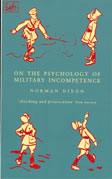
Norman F Dixon:
On the Psychology of Military Incompetence,
Random House, Pimlico, 1994, ISBN 0-7126-5889-0, (448 pages, 135*215 mm)
Professor Dixon's 400page treatise convincingly shows how it is not a weak intelligence of the commanding general, but an authoritarian personality that explains military disasters.
Authoritarians are conventional, conformist, over-controlled, status-hungry, pathologically ambitious, driven by fear of failure, obstinate, ethnocentric, devoid of real compassion, anti-intraceptive, punitive, obsessive, sexually inhibited, anti-intellectual, superstitious, rigid, with a closed mind, they like to be governed by rules and abhor what is spontaneous, flexible and unusual.
The very antithesis of Musashi's: "keep an open free and floating mind", "cultivate a broad interest in the arts", "observe what can not be seen by the eyes", etc. Of course this is catastrophic to their ORIENTATION ability.
Needless to say they are often drawn to the military and can be quite adept at rising through the ranks.
Such people will not take new strategy theories to their heart.
The parallel to any large organization is obvious. Anyone with a bit of experience in leading project development or change work will have met one or more authoritarians in executive positions.
Dixon´s book is divided into three parts:
- Descriptions of British war disasters from the Crimean war to WW2. Although the described actions took place a long time ago, it is hard not be aroused with rage at the senseless killing of troops just because their commanders were so utterly incompetent.
- The causes of incompetence is discussed and it is convincingly shown that incompetent commanders have authoritarian personalities, are obsessive, have weak self-esteem, etc.
- Here individual differences, the worst and the best, and what might seem to be exceptions to the rule are discussed.
Professor Dixon's book gives valuable insights into the poor inner life of some leaders and also serves as a quick briefing in this psychology field.
There are two diagrams, at pages 29 and 33 that in their principal content are very similar to, or harmonize with, the O-O-D-A loop.
This book is a must-read for any product development consultant or project manager.
Gareth Morgan:
Images of Organization,
The Executive Edition, Berret-Koehler Publishers, Inc, 1998, ISBN 1-57675-038-8
(350 pages, 155*234 mm)
This is the book to read if you want to learn about the many different ways to portrait an organization.
Morgan discusses organization metaphors and gives no less than 13 different examples of metaphorical views of an organization.
If you presently find yourself in an organization that bothers you, or perplexes you, or if you are eager to learn, chances are you will gain plenty by reading this book and by reflecting on what you read. It actually helped me when I was on the management team of a company heading straight of the cliff.
The uncertainty of changing course and possibly saving the company induced more fear in most members of the managing team, than certain disaster. Very strange, but Morgans book helped give some of the answers. A good read. Recommended.
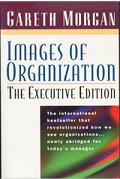
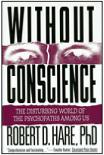
Robert D Hare:
Without conscience: the disturbing world of the psychopaths among us, Guilford Press, 1999, ISBN 1-57230-451-0, (236 pages, 136*210 mm)
Dr Hare literary wrote the book on psychopathy. He even wrote the WHO definition of psychopathy and has probably met with and studied more psychopaths than anyone ells.
This is an easy read about a disturbing subject. About 0,5-3% of the population are psychopaths. So chances are you will meet one. In business or at the work place. They can be very, very troublesome to have to deal with. Do not believe that you can outsmart, outmaneuver a psychopath in your organization or in business. If your boss is a psychopath, change job now!!
Not all psychopaths will be criminals, but 60% of all prisoners in Sweden serving a longer sentence are psychopaths. Hare says that intelligent psychopaths, well educated, from a good background will pose a threat to your economy. Only the psychopaths with low intelligence and from deprived homes will be a threat to your life.
Read this important book! It could save your life, your emotions, and even save your money, if you are lucky.


Edwin Olson & Glenda Eoyang,
Facilitating Organizational Change; lessons from complexity science,
Jossey-Bass/Pfeiffer, 2001, ISBN 0-7879-5330-X, (191 pages, 178*233 mm)
In principle Eoyang's doctoral thesis, but more axessable. This book builds on the concept of Complexity Science, as hinted by the book's title. If you are interessted in groups, or act as a project leader or manager, read this book. Recommended.
Patrick Hoverstadt
The Fractal Organization: Creating Sustainable Organizations with the Viable System Model,
John Wiley & Sons (17 Oct 2008), ISBN-13: 978-0470060568
(336 pages, 226*150 mm)
Patrick Hoverstadt has written the book that I wish I read 30 years ago, because I see clearly how I could have benefited from the knowledge Hoverstadt wants to give his reader. This was not possible, of course, since the book was written and published only recently.
Hoverstadt is both an academic and a management consultant. His consultancy business is largely based on the Viable Systems Model (VSM) by Stafford Beer.
VSM is a model of a system with five necessary sub systems that every organization, such as a company, must have in order to be viable. Extremely fascinating, but too complicated to be described in a few lines.
Furthermore, Hoverstadt describes a number of archetypes or typical action patterns that he has encountered in his consultancy practice. This is also very interesting.
You should immediately by this book and read it in order to get access to a theoretical model that will help you better understand and improve upon the organization that you work within.
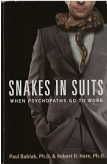
Paul Babiak & Robert Hare,
Snakes in Suits; when phsycopaths go to work,
Harper Collins Publishers, 2006, ISBN 978-0-06-114789-0,
(336 pages, 150*228 mm)
Babiak and Hare has written a follow up to Hare's Without conscience: the disturbing world of the psychopaths among us.
This book is about those persons that do not receive full pot, all four markers of psychopathy, but only three of the markers and are capable of getting an education and a carrier that sadly often leaves a trail of casualties behind.
You meet annoying, troublesome, people at work, but that is a mild breeze compared to what awaits you if you are up against a psychopath. Really tough, as we know who have been there.
A readable book that has an entertaining story interleaved with the theoretical sections.
Recommended.

Steven Pinker,
The blank slate, the modern denial of human nature,
BCA, 2002, ISBN 0789713992564
There are three persistent myths in popular western thought, they are:
- The blank slate, every human is born with a brain that is as a blank white paper, upon which society will create a mind through impressions. Environment, not genetics forms the human mind.
- The noble savage, "natural man" or man as we find him in prehistoric hunter-gatherer groups are peaceful, non-aggressive, a real saint.
- The ghost in the machine, there is a soul inside the brain that "operates" the brain. It is this soul, this ghost in the machine, that feels and makes judgments.
Steven Pinker, a professor of psychology and director of the Center for Cognitive Neuroscience at MIT, refutes the three common myths by aid of reasoning and solid proofs from modern science.
There is no blank slate. Evolution has formed our brain into something useful for handling the world our ancestors lived in.
There are special circuits and areas dedicated to predetermined functions as dictated by our genes. We are born with vision and audio processing circuits, with language processors in place, etc.
Early humans were no saints. There were continuos wars with neighboring tribes, rapes, torture, and yes genocide (how do you think the Neanderthals died out?). The greatest innovation in human history was the enlargement of the circle of ones loyalty from ones family and tribe to all humans that were willing to do the same. The idea that there are fundamental rights applicable to all mankind is the foundation of all moral and ethics upon which our modern civilization rests.
We humans are created individually unique by our genes. It is this difference between us that makes us all so valuable to one another.
Anything negative about the book? Well, it is a bit wordy and 200 pages would have sufficed for me instead of the 509 pages that one now has to plow through. And again, the paper quality is poor as so often is the case with paperback editions. The paper has to much bending stiffness creating what among printers is called a mouse trap book.
I recommend this book to anyone with an interest in who we are as a species, and what makes up our minds.









